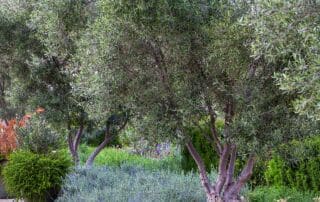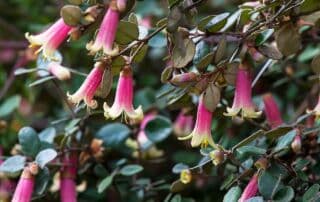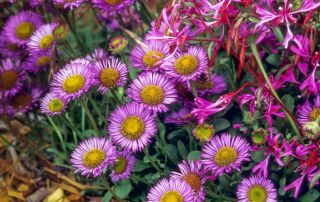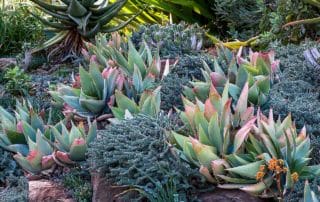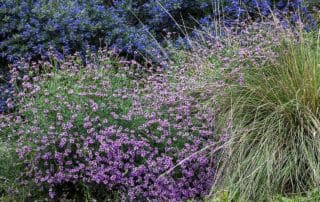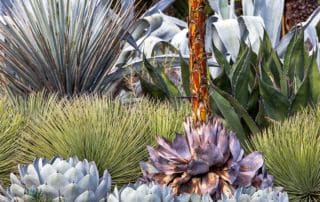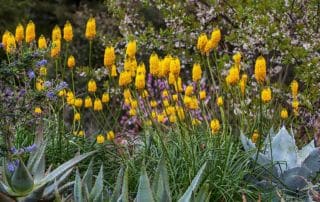Descriptions with photos of garden plants suitable for summer-dry gardens.
Fruitless Olives?
To aficionados of olives and olive oils planting fruitless olive trees may seem a pointless exercise. Yet there are good reasons to include these well-mannered trees and shrubs in summer-dry landscapes. Olives need little summer water and they blend well with other summer-dry plants. With a history going back thousands of years in the Mediterranean region and hundreds of years in summer-dry parts of the Americas, olive trees instantly evoke, on sight, nostalgic associations with sunny summer-dry lands. Fruitless olives do the same without the mess. Olea europaea 'Wilsonii' at Huntington Botanical Gardens Fruitless olives are cultivars


